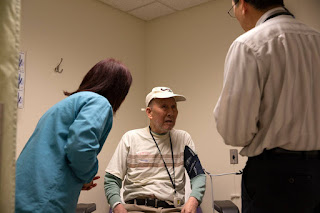The elderly man wearing a cap stood outside the church – Light of the World – on Georgia Street. He looked fit and athletic for his age. It was Sunday morning and in this part of Maryland, church services were open. The churchgoers, wearing masks, and avoiding groups, were puzzled by the big sign next to him.
“Free Bikes”. Big
Bikes, Little Bikes, Tricycles. All free.
People curiously looked at him, the row of bicycles
next to him and wondered what sort of new scam this could be. Soon boys and
girls, men and women, were seen talking to him, asking him questions. In a
matter of minutes, all cycles were gone. The man adjusted his cap, and started
walking home.
*****
The man’s name is Manuel Vera. He is 71, now in his
fifth year of retirement. Even when he worked for a company, he loved to ride
bicycles. He had taken part in triathlons and cycle races. Over the years, as
is common with cycle racers, he had become a self-taught mechanic. He replaced
tires, tubes, adjusted brakes, tightened cables, adjusted derailleurs and
replaced shifters.
When the first lockdown started, he realized a bicycle
was an ideal vehicle. (Last August, I wrote why two wheels were better in the
pandemic, and also how a natural disaster had triggered the bicycle invention).
A lot of cycles must be lying idle, doing nothing,
thought Manuel. Children outgrow the bicycles they ride. Adults with big houses
keep buying new ones without getting rid of the old. And for many, the
enthusiasm at the time of buying a bike is short lived, resulting in a decaying
unused bike. In rich nations such as America; garages, sheds and basements are
full of old bicycles. (In my apartment complex in Bombay, literally dozens of bicycles are parked in the courtyard, in special
racks, where they rust and rot rapidly in the humidity.)
*****
Manuel started talking to his neighbours. Just like
pianos, bicycles need to be tuned regularly. He said he would be happy to
perform tune-ups on their bicycles. He began repairing 3-4 bikes every day. He
asked the neighbours to pay for the parts to be replaced. His labour was free.
His corporate career had taught him to keep records
meticulously. He tuned up 104 bicycles from his neighbourhood in the first few
months.
In November, he sent a note around saying if people
had any bikes that were simply taking up space; he would fix them up and give
them away free. The response surprised him. He agreed with the local church to
take the bikes there on Sunday mornings, and give them free to whosoever
wanted.
Most recipients of the free bikes were blue collar
workers, immigrants, poor teenagers, people who never thought they could afford
to own a bike.
*****
In the first few months of the pandemic project, Manuel
gave away 40 bicycles and spent about $300 from his pocket which he didn’t
mind. Every day, he works on three or four bikes, clamped to a washing station
in his backyard, before moving up to his deck to work on them. He now gets his
donor bikes through a Facebook group called “Buy Nothing”. Now instead of the
church, he stands outside the neighbourhood park, a location with a food pantry
nearby.
He still rides, doing a 13-mile loop twice a week.
Sometimes a bike passes by, and like a teacher recognizes past students, he
immediately knows the bike that has passed through his hands. It was full of
cobwebs, not ridden for ten years before he worked on it.
When he sees a child riding, he remembers his
childhood in Peru. He remembers that moment when his father let him go. Little
Manuel was surprised when he managed to balance himself on the bicycle for the
first time. That moment, though some sixty-five years ago, is still fresh in
his memory.
Ravi










